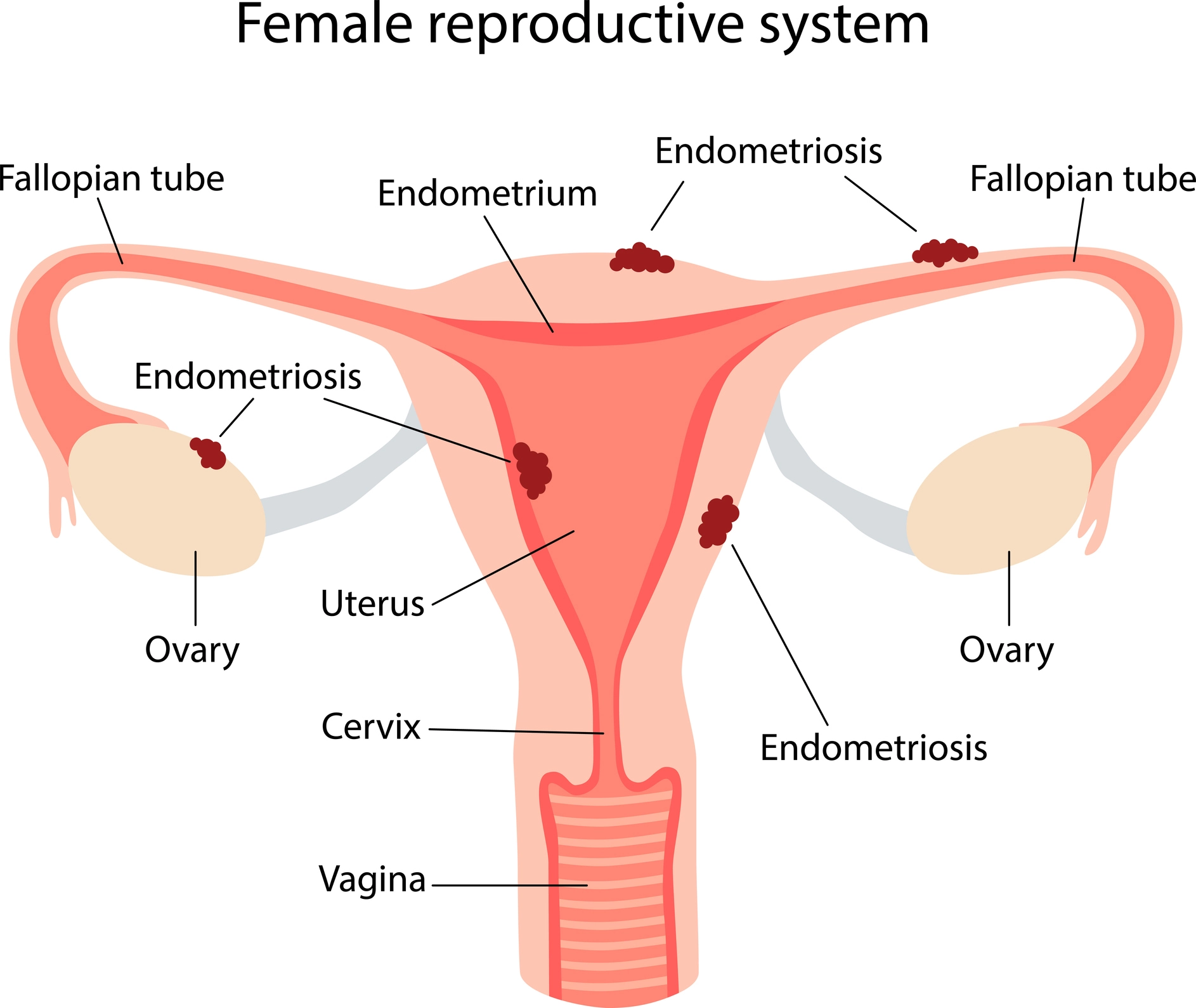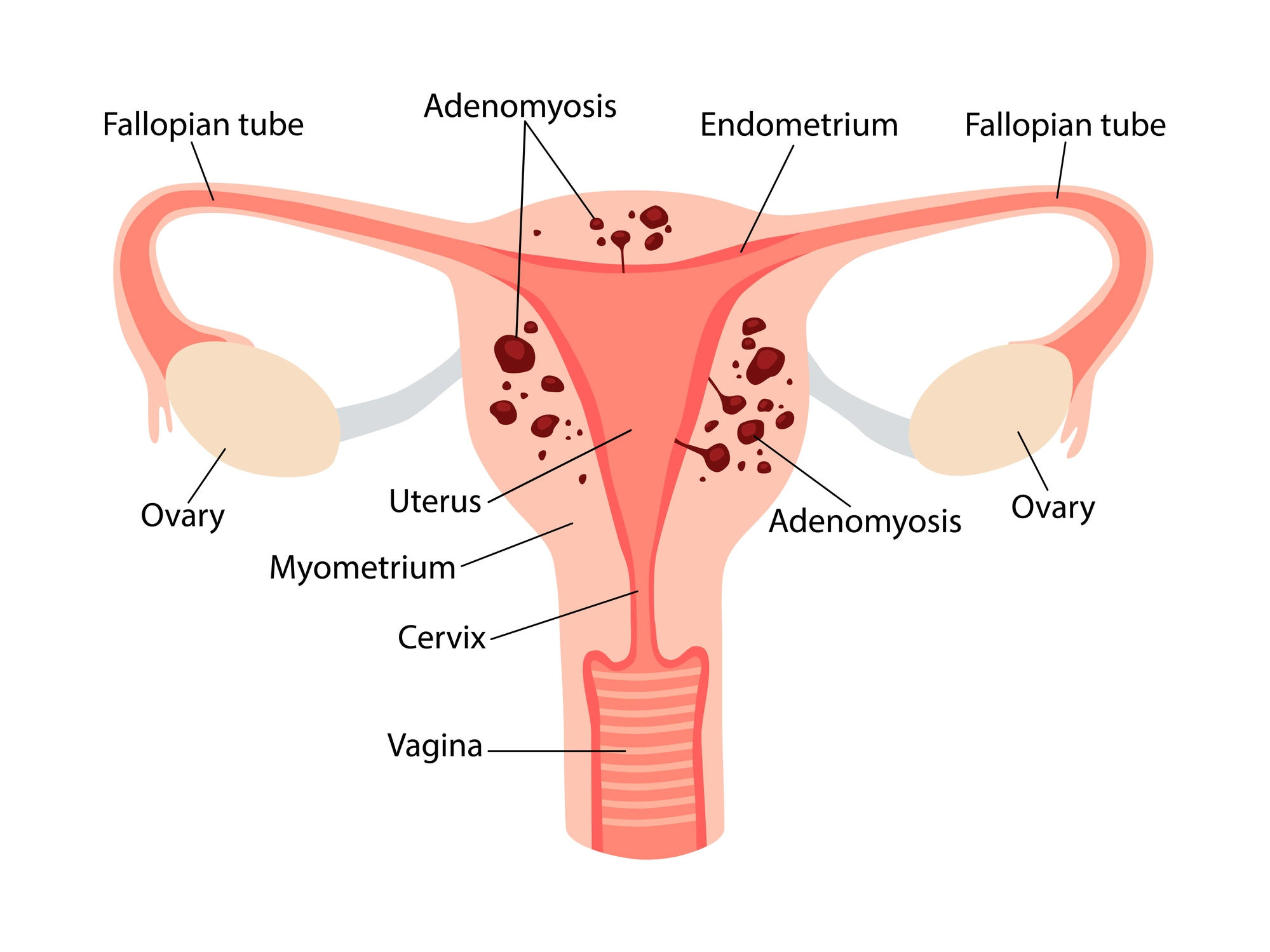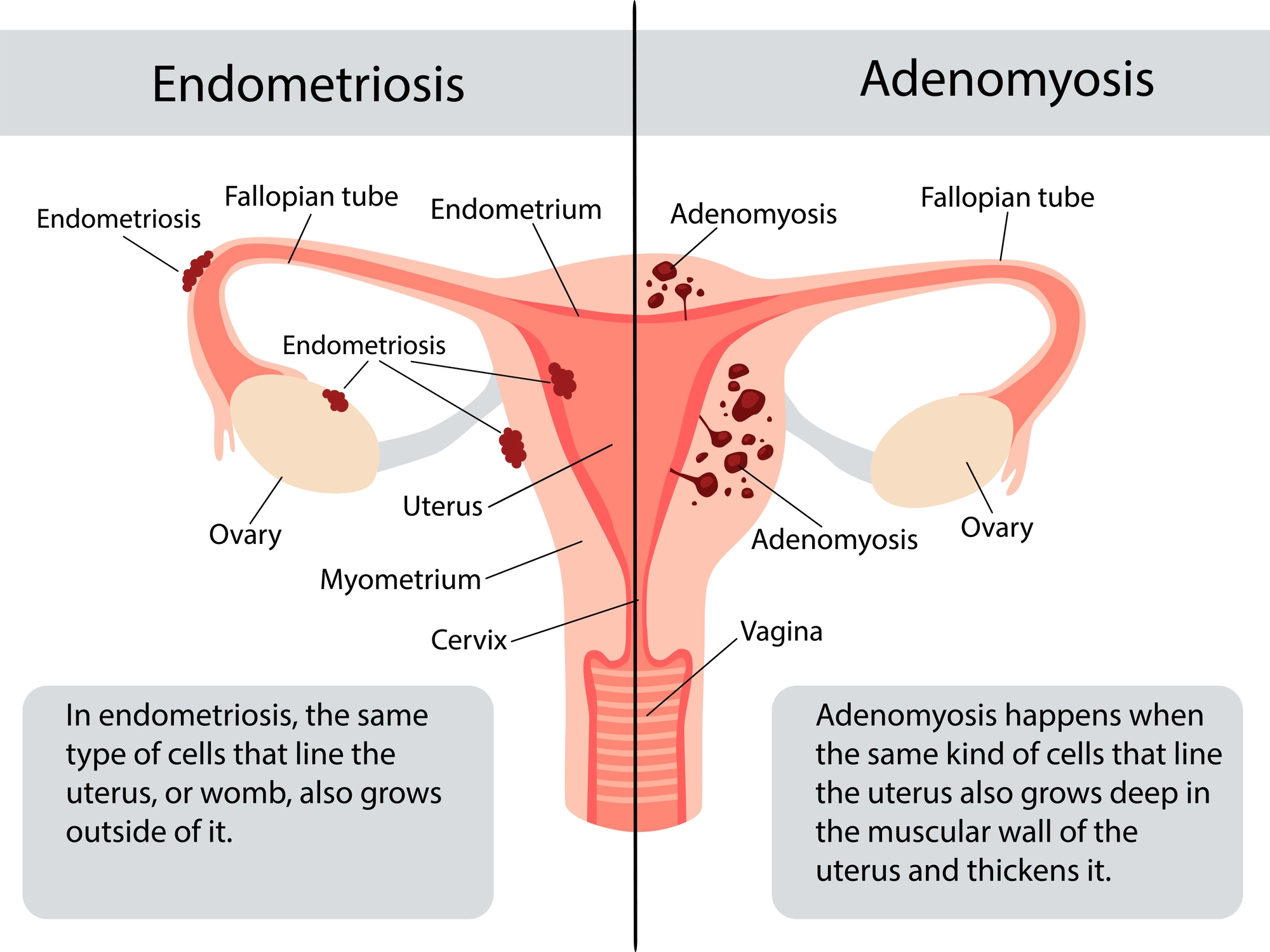What is endometriosis?
Endometriosis is a condition in which the tissue that normally lines the inside of the uterus
(endometrium) grows outside the uterus, such as on the ovaries, fallopian tubes, or other organs in
the pelvic cavity.

Approximately one in ten women are affected by endometriosis. If your mother or sister had
endometriosis, you are more likely to develop the condition. Endometriosis typically affects
reproductive-aged women. It may be a chronic condition that significantly affects your general
physical health, emotional well-being, and daily routine.
What is adenomyosis?
In adenomyosis, the tissue that normally lines the inside of the uterus grows into the muscular
wall of the uterus. It may affect the entire uterus or one part of the uterus.

Adenomyosis is not a life-threatening condition; however, the symptoms can impact your daily
life. Hence, it is crucial to receive proper medical attention.
So, is endometriosis the same as adenomyosis?
Endometriosis and adenomyosis are two distinct medical conditions that affect the uterus and can
cause similar symptoms, but they are not the same.

- In endometriosis, the endometrial tissue that normally lines the inside of
the uterus grows outside of the uterus.
- In adenomyosis, the endometrial tissue that normally lines the inside of
the uterus grows into the muscular wall of the uterus.
It is possible for a woman to have both conditions simultaneously. While the two conditions share
some similarities, they have distinct differences too.
What are the risk factors of endometriosis and adenomyosis?
Endometriosis and adenomyosis are both conditions that affect the uterus and can cause
significant pain and discomfort. While the exact causes of these conditions are not fully
understood, several potential factors may contribute to their development.
| Condition
| Endometriosis
| Adenomyosis
|
|---|
| Risk factors
| - Age: Commonly seen in younger women.
- Family history: Endometriosis often occurs in families.
Women with a first-degree relative (mother, sister) with endometriosis have
a higher risk of developing the condition.
- Uterine abnormalities: Some uterine abnormalities, such as
a retroverted uterus, may increase the risk.
- Hormonal imbalances: Elevated oestrogen levels or an
imbalance between oestrogen and progesterone may contribute to
endometriosis.
| - Age: Women aged between 40 and 50.
- Previous pregnancies: Women who have had multiple
pregnancies may be at higher risk.
- Uterine surgery: Women who have had a previous uterine
surgery may be at higher risk.
- Hormonal imbalances: Some hormonal imbalances, such as
excess oestrogen production, may increase the risk.
- Genetic factors: Genetic predisposition plays a role, with
adenomyosis often occurring in families.
|
What are the symptoms of endometriosis and adenomyosis?
The symptoms of endometriosis and adenomyosis can vary from person to person, and some women may
not experience any symptoms at all.
| Endometriosis
| Adenomyosis
|
|---|
- Pelvic pain that worsens during your period
- Painful periods (dysmenorrhea)
- Pain during or after sexual intercourse
- Painful bowel movements or urination, especially during
menstruation
- Difficulty getting pregnant (infertility)
- Fatigue, bloating, constipation, diarrhoea, or nausea, especially
during menstruation
| - Pelvic pain that worsens during your period
- Heavy or prolonged menstrual bleeding during menstruation, which
can last longer than usual
- Painful periods (dysmenorrhea)
- Pain during or after sexual intercourse
|

How are endometriosis and adenomyosis diagnosed?
Your doctor would first question your general health and symptoms before conducting a thorough
physical examination. Diagnosis is made based on your reported symptoms, physical examination,
and investigations.
- Pelvic examination
- Your doctor would manually palpate the pelvic area to check for abnormalities or
tender
areas.
- Imaging tests
- Ultrasound: Transvaginal ultrasound is often the initial imaging
test to evaluate the uterus and pelvic organs. It can help identify structural
abnormalities, such as uterine enlargement or the presence of uterine masses.
- Magnetic resonance imaging (MRI): May be recommended for a more
detailed assessment of the uterus and surrounding tissues. It can provide clearer
images of the extent and location of endometrial tissue or adenomyotic lesions.
- Laparoscopy
- Laparoscopy is a minimally invasive surgical procedure.
- The doctor will insert a thin, lighted tube with a camera through a small incision
in the
abdomen to view the pelvic organs and take a tissue sample for biopsy.
- Biopsy
- A tissue sample taken during laparoscopy can be examined under a microscope to
confirm the
presence of endometrial tissue outside the uterus or within the uterine muscle.
What are the treatment options for endometriosis and adenomyosis?
The treatment options for endometriosis and adenomyosis depend on the severity of the symptoms
and the individual's goals, such as improving fertility or relieving pain.
Here are some treatment options for endometriosis and adenomyosis:
- Pain medication: Nonsteroidal anti-inflammatory drugs (NSAIDs) such as
ibuprofen and naproxen can help relieve menstrual pain associated with endometriosis and
adenomyosis.
- Hormonal therapy: Hormonal treatments such as birth control pills,
progestins or Gonadotropin-Releasing Hormone (GnRH) agonists can help regulate hormonal
imbalances that cause endometriosis and adenomyosis symptoms.
- Surgery:
- Laparoscopy: Excision or removal of endometriotic lesions through
laparoscopy can provide long-term relief from symptoms and improve fertility in some
cases. This approach is often considered for endometriosis.
- Hysterectomy: In severe cases of endometriosis or adenomyosis, when
other treatments have not been effective or fertility is no longer a concern, a
hysterectomy (removal of the uterus) may be recommended.
- Fertility treatments: If endometriosis or adenomyosis is causing
infertility, fertility treatments such as medication to induce ovulation, intrauterine
insemination (IUI) or in vitro fertilisation (IVF) can be used to improve the chances of
pregnancy.
Can I get pregnant if I have endometriosis or adenomyosis?
Yes, it is possible to get pregnant if you have endometriosis or adenomyosis, but it may be more
challenging. Both conditions can affect fertility due to scarring, inflammation, and hormonal
imbalances that interfere with ovulation and implantation of a fertilised egg.
If you have endometriosis or adenomyosis and are trying to conceive, you should consult a doctor
specialising in fertility or reproductive health. They can assess your situation, provide
guidance on potential fertility challenges, and discuss available treatment options or assisted
reproductive technologies that may improve your chances of getting pregnant.
Book an appointment at Pantai Hospitals
Take charge of your reproductive health today. Early detection of endometriosis and adenomyosis
paves the way for effective and appropriate treatment.
A dedicated and expert team of obstetricians and
gynaecologists at Pantai Hospital is available for consultation to provide patients with
the best care and assistance. Get in touch with us to book
an appointment
today if you have any concerns or questions about endometriosis and adenomyosis.
Pantai Hospital has been accredited by the Malaysian Society for Quality in Health
(MSQH) for its commitment to patient safety and service quality.






